Catalogue > Liste par artiste
Parcourez la liste complète des artistes présentés dans le cadre des Rencontres Internationales depuis 2004. Utilisez le filtre alphabétique pour affiner vos recherches.
Thomas Kneubühler
Catalogue : 2015Forward Looking Statements | Doc. expérimental | hdv | couleur | 3:47 | Canada | 2014
Thomas KneubÜhler
Forward Looking Statements
Doc. expérimental | hdv | couleur | 3:47 | Canada | 2014
A conference call by investors of a planned iron mine provides the soundtrack for a ride over the land which the company wants to exploit. The land in question is a traditional hunting ground for the Inuit community of Aupaluk, located in Canada's far North. The village has already been relocated in the 1980 and is now again under threat. The term "forward looking statements" is used in the world of investors to describe future events which are subject to certain risks and uncertainties.
Born in Solothurn, Switzerland, Thomas Kneubühler has been living in Canada since 2000. In 2003, he completed a Master’s degree in Studio Arts at Concordia University, Montreal. His work often deals with social issues and how technology is affecting people’s lives. His work has been presented in many exhibitions in both Europe and North America, most recently at the Québec Triennial at the Musée d’art contemporain de Montréal (2011), at the Centre culturel canadien, Paris (2012) and at the Centre Pasquart, Bienne (2014). In 2011 he was awarded the Pratt & Whitney Canada Prize of the Conseil des arts de Montréal, and in 2012 the Swiss Art Award by the Ministry of Culture Switzerland. «Whether it is the ambiguous boundaries of public and private space, the all-pervasive spectre of security surveillance or even the radiant, if dehumanizing, beauty of cityscapes, Kneubühler’s practice tellingly identifies the co-existing insecurities, uncertainties and subtle pleasures embedded in the structures of modern life.» (Bryne McLaughlin, Canadian Art)
Catalogue : 2014Days in Nights | Doc. expérimental | | couleur | 3:45 | Canada | 2013
Thomas KneubÜhler
Days in Nights
Doc. expérimental | | couleur | 3:45 | Canada | 2013
It is hard to navigate in the dark, especially in an unknown territory. Over time, the eyes adjust to the darkness, and the new environment starts to emerge. This video was made during an artist residency at CFS Alert, a military and research station in the high Arctic. CFS Alert is the northernmost settlement in the world, 800 km from the North Pole. From October to early March there is polar night, with no direct sunlight. Most people at the station are there for limited time, on average 3 to 6 months.
Thomas Kneubühler vit au Canada depuis 2000. Il est titulaire d?une maîtrise en beaux arts de l?Université Concordia. Son travail a été présenté dans de nombreuses expositions individuelles au Canada et dans le cadre d?expositions collectives au Canada, en Chine, en Suisse, aux Pays-Bas, en Allemagne et au Mexique.
Francois Knoetze, Russel Hlongwane, Amy Louise Wilson
Catalogue : 2023Dzata: The Institute of Technological Consciousness | Vidéo expérimentale | mp4 | couleur | 8:23 | Afrique du sud | 2023
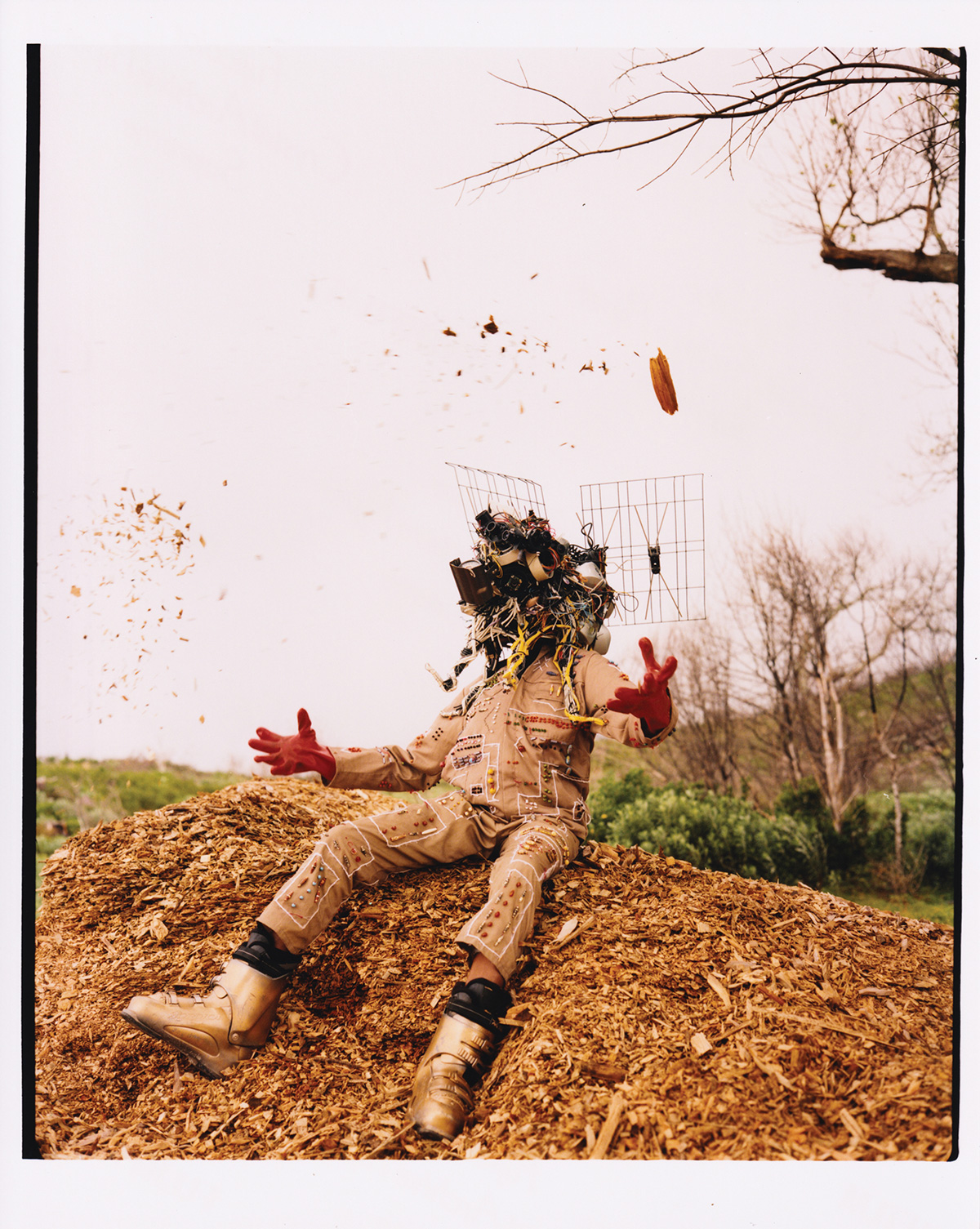
Francois Knoetze, Russel Hlongwane, Amy Louise Wilson
Dzata: The Institute of Technological Consciousness
Vidéo expérimentale | mp4 | couleur | 8:23 | Afrique du sud | 2023
Dzata: The Institute of Technological Consciousness is a creative research project by South African artists Russel Hlongwane, Francois Knoetze and Amy Louise Wilson. In fabricating a fictional institute and its archive, the artists explore and imagine vernacular technological practices operating across the African continent. An intertextual conversation between the documentary and the poetic, the video operates as an in-house media assemblage created for the preservation of the institute’s activities and ideas. The project aims to foreground indigenous technological knowledge and to explore how science, technology and innovation are part of a long interlinked process of accumulative knowledge production which extends long into the past. The work builds on the field of technopolitical research to formulate a multi-scalar history and future of technological creativity. Positioning the triumphs and failures of the everyday in the future-oriented technoscientific, the work unfolds the idea of development as a historical process Africans shaped.
Russel Hlongwane works in the production and assembly of culture. His area of interest is in heritage, tradition and modernity in South Africa. He moves between art-making (installation and film) and curating. His performance work operates as a bridge to transmit his academic interest to a broader audience, while his writing practice moves between academia, policy and art journals. His most recent peer reviewed paper is titled ‘Transcendental Technologies, Mother Tongues and Space (2022). He works intentionally with language (isiZulu) as a way to mobilise ideas contained in supressed histories. His work, Ifu Elimnyama (The Dark Cloud) has featured in six exhibitions and won the Sharjah Film Platform Jury Award. He curated the Bristol based Cntrl Shift Network festival that featured filmic works from the global south confronting the relationship between technology and the continent. Lo-Def Film Factory (Francois Knoetze & Amy Louise Wilson) is a DIY art duo who work across archival research, dramaturgy and visual strategies with video art, collage, sculptural installation and virtual reality. The duo aims to create a space for storytelling through the democratization of filmmaking via video by and for underrepresented communities across Southern Africa. They run workshops and work with various communities, placing value on the transmission ideas and lived experience over high production values. Their VR experience and research project The Subterranean Imprint Archive explores the legacy of technologies used in the extraction of mineral resources in Central and Southern Africa. It has been shown at the International Film Festival Rotterdam, University of African Futures (France), MUTEK Montreal and the Geneva International Film Festival. Amy and Francois have exhibited at the ZKM Center for Art and Media, The Centre Pompidou, The Dakar Biennale and the Akademie Der Kunste, Berlin.
Francois Knoetze, Amy Louise Wilson
Knut Asdam Special
Catalogue : 2013 | | | | 90:0 | Norvège | 0
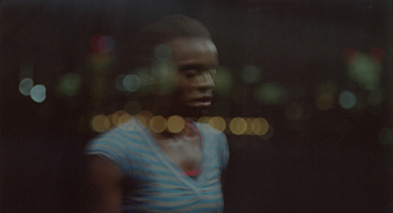
Knut Asdam Special
| | | 90:0 | Norvège | 0
.
.
Fred Koenig
Catalogue : 2007The truth of the deep colors of Kaspar Kameleon | Doc. expérimental | dv | couleur | 16:30 | France, Allemagne | 2004
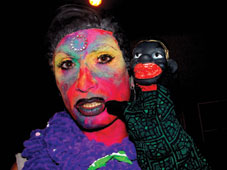
Fred Koenig
The truth of the deep colors of Kaspar Kameleon
Doc. expérimental | dv | couleur | 16:30 | France, Allemagne | 2004
Portrait du performer berlinois Kaspar Kameleon. Nous le suivons durant ses répétitions, chez lui et dans le cabaret où il se produit. Il nous emmène dans son village natal, Stockhausen au centre de l'Allemagne, où nous rencontrons ses proches et voyons le bon accueil que lui font les gens . Ils sont heureux de voir son spectacle de Pâques. Nous rencontrons sa mère qui nous livre généreusement ses sentiments quant au fait que son fils soit un performer Drag. Kaspar est une légende de la nuit underground berlinoise. Ce film, le second que lui consacre Fred Koenig ( cf: "the colors of Kaspar Kameleon" 2003 ) est un véritable hommage à cet artiste géréreux et créatif, ainsi qu'une leçon de tolérance.
J'ai voyagé et vécu au Mexique, en Allemagne, à New york, en Haïti, en Afrique du Sud. Ces lieux ont destabilisé ma vision occidentale du monde. Mon inspiration me vient des gens que j'ai pu rencontré durant ces voyages. Leurs histoires et leurs comportements m'aident à développer mon travail. A travers leurs expériences et mes observations, je redéfinis ma personne et mes recherches selon ce que j'appelle "LE DÉSIR D'APPARTENANCE". Cela résume mon travail. Je ne suis ni un observateur ni un anthropologue, j'interagis, je vis, je participe et n'anticipe pas. Via la photographie, la vidéo, la danse, je n'apporte pas au public qu'un divertissement, mais aussi un sujet de réflexion.
Jan Koester
Catalogue : 2007Our Man In Nirvana | Animation | 35mm | couleur | 10:27 | Allemagne | 2005
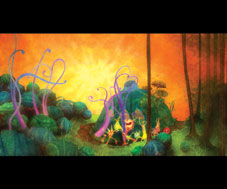
Jan Koester
Our Man In Nirvana
Animation | 35mm | couleur | 10:27 | Allemagne | 2005
John, célèbre rock-star, meurt accidentellement lors d´un concert avec son groupe, et se réveille au Nirvana. C´est là qu´il doit faire face à ses voeux et à ses actes.
Jan Koester naît en 1978 à Berlin. Après une scolarité à Fribourg et Wilhelmshaven il retourne à Berlin pour étudier l´animation au HFF "Konrad Wolf". Il achève "Our Man In Nirvana", le film qu´il tourne pour son diplôme, en Novembre 2005, après trois ans de travail. Il travaille actuellement sur un nouveau court-métrage.
Niki Kohandel
Catalogue : 2022The Sparrow Is Free | Doc. expérimental | hdv | couleur | 14:6 | France, Royaume-Uni | 2021
Niki Kohandel
The Sparrow Is Free
Doc. expérimental | hdv | couleur | 14:6 | France, Royaume-Uni | 2021
In an empty house, a young woman hears a voice. The tales it evokes lead her to recreate scenes from her grandmother’s past life. Through objects found at home, Kohandel's short interview-film explores gender roles in early 20th-century Iran. As a young girl, marriage to her older cousin leads to years of control and frustration. Rebelling against her husband, she eventually relocates to France with her sons, building a new life. As she voices her own story, the film weaves her experiences together into a broader narrative of self-determination. She carves out her independence in Paris and finds comfort in the everyday. A simple kind of happiness follows, the sparrow is free.
Niki Kohandel (b. 2000, Paris) is an artist and filmmaker, in her third year of undergraduate studies at the Slade School of Fine Art, UCL. Niki films mothers and daughters, houses and flowers, and all sorts of things which, like relationships, can be nurtured, but also grow out of control. She uses obsolete recording devices and her imperfect knowledge of languages to document and tell stories, creating at the interplay between the analogue and the digital.
Kai Foong Kok
Catalogue : 2006Life is Elsewhere | Film expérimental | dv | couleur et n&b | 7:14 | Malaisie | 2004
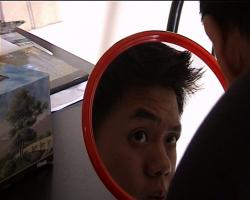
Kai Foong Kok
Life is Elsewhere
Film expérimental | dv | couleur et n&b | 7:14 | Malaisie | 2004
Avez-vous parfois l'impression d'être observé ? Qui observe qui ? La vie de qui sommes-nous en train de vivre en ce moment ? En regardant dans un miroir, qui voyons-nous ?
KOK Kai Foong a étudié les Sciences de l'Informatique à l'Université de Tamkang (Taïwan) et est devenu critique de films en 1996. Depuis 2002 il a réalisé plusieurs courts-métrages, en parallèle à son travail d'ingénieur informatique freelance.
Alice Kok, Pascal Lièvre
Siew-wai Kok
Catalogue : 2008In Solitude, A Camera-eye | Vidéo expérimentale | dv | couleur | 4:25 | Malaisie | 2006
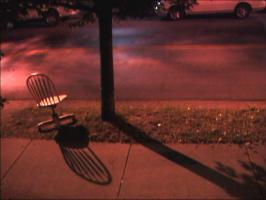
Siew-wai Kok
In Solitude, A Camera-eye
Vidéo expérimentale | dv | couleur | 4:25 | Malaisie | 2006
La vidéo a été tournée dans deux endroits: à Buffalo, New York (Etats-Unis) et à Kuala Lumpur, en Malaisie. La caméra, portée à l'épaule, est comme l'extension des yeux de l'artiste. Une nuit ventée, avant la pluie, une caméra-oeil a saisi des aspirations, la solitude et le temps.
Née et élévée à Kuala Lumpur, en Malaisie, Siew-wai Kok est une artiste spécialisée dans la vidéo, qui travaille également sur le son et les représentations. Son oeuvre explore des thèmes intimes de la vie quotidienne tels que l'émotion, la solitude et les aspirations spirituelles. Siew-wai a obtenu son Bachelor of Arts dans le domaine des médias à l'Université de Buffalo, et son Master of Fine Art d'Arts appliqués à l'électronique à Alfred University. Elle a participé à des festivals internationaux tels que le 25hrs International Videoart Show 2003 (Espagne), Signal & Noise 2006 (Canada), le Festival International du Film de Rotterdam en 2007 (Pays-Bas). Siew-wai enseigne actuellement à la Multimedia University (MMU) en Malaisie.
Jeanna Kolesova
Catalogue : 2025Memory is an Animal Which Barks with Various Mouths | Installation vidéo | mp4 | noir et blanc | 15:35 | Russie, Allemagne | 2023
Jeanna Kolesova
Memory is an Animal Which Barks with Various Mouths
Installation vidéo | mp4 | noir et blanc | 15:35 | Russie, Allemagne | 2023
The film explores the interplay between the real and the imagined, the collective and the personal, and raises the question: how has collective memory of the Second World War been manipulated? Public commemoration, the aggressive patriotic indoctrination of children, and the cult of victory have shaped a war-centered identity and national narrative in Russia. In contrast, individual memories of those who lived through the Second World War often reflect its violence and tragedy. Could this discrepancy between individual and collective memory offer a way to challenge and break free from the nationalist narrative of the past?
Jeanna Kolesova (b. 1988, Moorland Village, Russia) is an artist, filmmaker, and researcher. Working across moving image, performance, web, installation, and text, their work explores the manipulation of history, information, and the impact of imperial technologies on bodies and landscapes. Kolesova studied documentary film and photography in St. Petersburg, interactive media at CalArts, and experimental film at the Berlin University of Arts. Their works have been exhibited in Prague, Berlin, Dresden, Baden-Baden, LA, Tokyo, and St.Petersburg. Kolesova has received the KUNSTFONDS (2024) and Karl Hofer (2023) scholarships and participated in the Berlin Goldrausch artist program (2024).
Selene Kolman, Stef KOLMAN
Catalogue : 2006Tokyo Driver Caress | Fiction expérimentale | dv | couleur | 11:32 | Pays-Bas, Pays-bas | 2004
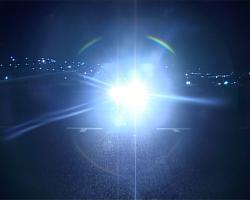
Selene Kolman, Stef KOLMAN
Tokyo Driver Caress
Fiction expérimentale | dv | couleur | 11:32 | Pays-Bas, Pays-bas | 2004
Taisuke conduit à travers les nuits d'un Tokyo futuriste. Des autoroutes lumineuses reflètent l'immensité et l'infini, avec des réseaux reliant les hommes, les véhicules et les visions. "Caress"... des images hypnotiques de voyages omniprésents de notre époque.
Selene KOLMAN est née en 1966, aux Pays-Bas. Depuis 2002, elle est enseignante à l'Université de Utrecht (Nouveaux Media et Culture Numérique) FORMATION 1994 - Maîtrise de Philosophie, Université d'Amsterdam 1993 - Licence à l'Art Academy Minerva, Groningen 1990 -Histoire de l'art propédeutique, Université de Groningen Stef KOLMAN est né en 1967 aux Pays-Bas. Depuis 2003, il est directeur artistique, MediaCatalyst, Amsterdam FORMATION 1993 - Maîtrise : M.A. History&Theory Architectural Association, Londres 1992 - Licence à la Design Academy, Eindhoven Stijn VAN SANTEN est né en 1965 à Amsterdam. Après avoir achevé ses études à la Sint Joost Academy of Art à Breda en 1992, il devient cameraman (16mm) pour "Miss Blanche" et "Leklicht" de Mark de Cloe, "Some Like It Hot" et "Can't U Hear me Singing" de Walter Stokman, "De Tijdreiziger" de Dick Tuinder et "Jannes de Film" de Rein Hazewinkel. En 1993, il reçoit le Grolsch Prize pour les nouveaux talents au cours du Festival du Film Hollandais (1993). Il réalise "Igitur, Act of Presence" et "Goud", pour lequel il remporte la Golden Flame. En 1995, il réalise "Downstairs", sélectionné pour le Golden Calf. Ses récents films sont : "Ichiko, Laatste woorden" (documentaire) et "Talmen" pour lequel il a remporté le Golden Calf et plus récemment "Profs" (Kort! 2004).
Sara Kolster, Pawel GRABOWSKI
Catalogue : 2006 | Vidéo expérimentale | dv | couleur | 2:0 | Pays-bas | 2005
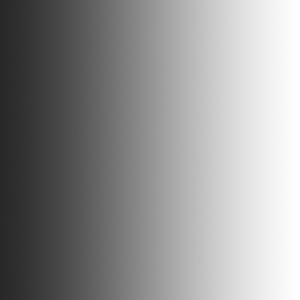
Sara Kolster, Pawel GRABOWSKI
Vidéo expérimentale | dv | couleur | 2:0 | Pays-bas | 2005
En utilisant ma caméra comme projecteur, révélant silencieusement les textures, l'espace narratif se dévoile. Les images et sons saisis rappelleront des lieux dans nos propres souvenirs. Chaque moment déterminé est comme une capsule de temps, un rappel d'un futur oublié dans le passé.
Kolster (1978-...) est une plasticienne et a une formation en design. Récemment, son travail s'est plus orienté vers la vidéo et le film, s'attachant à des détails de paysages urbains et visualisant des fragments d'histoires de ces environnements. Elle a recours à différentes stratégies, de medias tels que la vidéo, le film et la photographie, à des méthodes de recherche appartenant à diverses disciplines d'observation (journalisme, documentaire et archéologie).
Rainer Komers
Catalogue : 2019BARSTOW, CALIFORNIA | Documentaire | 4k | couleur | 76:0 | Allemagne | 2018
Rainer Komers
BARSTOW, CALIFORNIA
Documentaire | 4k | couleur | 76:0 | Allemagne | 2018
Troisième volet de The American West Trilogy (les deux premiers volets étant Nome Road System et Milltown, Montana (VdR, 2010)), ce film est un portrait poignant et complexe de la vie et des paysages du désert de Mojave. Par sa structure désarticulée qui évoque presque le "fingerpicking" minimaliste de John Fahey, tel un blues décharné perdu dans le temps, le film observe la façon dont la vie s`imbrique et s`écarte de la trame d`un mode de vie américain complètement oublié par les politiques de l`idéologie néolibérale. On y entend le poète et détenu Stanley »Spoon« Jackson, condamné en 1977 à perpétuité sans possibilité de libération conditio-nnelle et qui a séjourné dans plus d`une demi-douzaine de prisons californiennes, lire des passages de son autobiographie By Heart. Des images d`un monde imprégné par la pure mythologie américaine sont entrecou-pées et noyées dans la réalité et les conséquences brutales de politiques financières implacables. »Barstow, California« incarne assurément l`autre côté du rêve américain. Giona A. Nazzaro
Geboren 1944 in Guben. Filmstudium an der Kunstakademie Düsseldorf, Meisterschüler. Filmprojekte in Alaska, Indien, Japan, Jemen, Kalifornien, Lettland und Montana. »Barstow, California« wurde mit dem ARTE Dokumentarfilmpreis 2018 ausgezeichnet, »Nome Road System« mit dem Deutschen Kurzfilmpreis 2004, »B 224« mit dem Hessischen Filmpreis 2001, »Zigeuner in Duisburg« mit dem Preis der Deutschen Filmkritik 1980. Ruhrpreis für Kunst und Wissenschaft 2006. Masterclass IDF / Prag (2012); Videonale.scope Retrospektive / Köln (2014) http://www.videonale.org/en/VideonaleScope-2014; Iasi-Installation (2015) https://vimeo.com/135471613; Villa Kamogawa / Goethe-Institut Kyoto (2015) https://www.goethe.de/ins/jp/de/kul/res/sti/s15/rko.html. Festival-Screenings in 35 Ländern; Preise in Kanada, Frankreich, Polen und USA. Regie, Kamera, Word Art, Gedicht. Lebt in Berlin und Mülheim an der Ruhr.
Dane Komljen
Catalogue : 2025The Garden Cadences | Documentaire | 4k | couleur | 62:0 | Bosnie-Herzégovine, Allemagne | 2024
Dane Komljen
The Garden Cadences
Documentaire | 4k | couleur | 62:0 | Bosnie-Herzégovine, Allemagne | 2024
Mollies is a queer-feminist collective that had been living at a trailer park next to Ostkreuz in Berlin for nearly a decade. The Garden Cadences documents their last summer there before being evicted. Jone is ready to fly. She finds herself at the beginning of something new, but before she moves on, there needs to be a closure. Jone is one of Mollies, the queer-feminist collective that had been living for a decade at a trailer park next to Ostkreuz, Berlin. The Garden Cadences traces their last summer before being evicted.
Dane Komljen, born in 1986 in Banja Luka. He made three feature films, THE GARDEN CADENCES, AFTERWATER and ALL THE CITIES OF THE NORTH, and numerous shorts exploring notions of body, space, utopia and being together. His films were awarded at Festival del Film Locarno, IFF Rotterdam, Festival de Cannes, Sarajevo FF, New Horizons IFF, Festival de Sevilla and shown at Berlinale, Cinéma du Réel, FID Marseille, Toronto IFF, New York FF, FIC Valdivia, VIENNALE, Mar del Plata IFF, FICUNAM, Hong Kong IFF, CPH:DOX, Jeonju IFF, Art of the Real, 25 FPS and others. His work has been presented at the ICA in London, Volksbühne in Berlin, Centre Pompidou in Paris, Union Docs in New York, Lagos Biennale and elsewhere. He lives and works in Berlin.
Vero Kompalic
Catalogue : 2025Plástico: O los Comandantes de un tirano | Fiction | 0 | couleur | 30:0 | Venezuela, 0 | 2023

Vero Kompalic
Plástico: O los Comandantes de un tirano
Fiction | 0 | couleur | 30:0 | Venezuela, 0 | 2023
A sadistic commander forces a group of actors pretending to be soldiers into acts of violence, while a film crew captures the chilling reality.
Vero Kompalic is a Venezuelan filmmaker, programmer and painter. She focuses her scholarship work on postcolonial feminist discourse, with publications on the sexual transgression of Breillat’s work and the radical cinema of Mariana Rondon. She served as an AP and writer on SUMMERTIME, which premiered at SUNDANCE and was theatrically released in 2021. In 2020 she founded DISCORDIA, an independent production company, with her longtime collaborators.
Kong-chang Kong
Catalogue : 2006Name of Wu Mei | Vidéo expérimentale | dv | couleur | 16:0 | Hong Kong | 2005
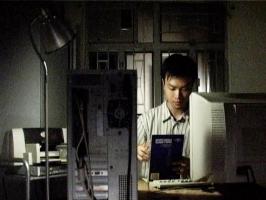
Kong-chang Kong
Name of Wu Mei
Vidéo expérimentale | dv | couleur | 16:0 | Hong Kong | 2005
L'histoire de cette vidéo est tirée d'une nouvelle, "The Name of Wu-mei", écrite par YUEN Siu-cheong. Yuen utilise une méthode de narration extraordinaire pour présenter l'histoire. Il pousse le lecteur à remettre en question son propre bon sens pendant la lecture. L'histoire parle du narrateur, Nin Kuen, qui nous raconte le procédé utilisé pour achever le roman "The Name of Wu-mei", tandis que nous découvrons, au cours de la narration, que l'intuition que l'on avait ne pourrait être qu'un mensonge de plus.
En 2000 et 2005, Kongkee est diplomé en arts plastiques à l'Université Chinoise et à la School of Creative Media, City University of Hong Kong. Il s'intéresse ensuite à la bande dessinée et aux vidéos, et crée notamment la bande dessinée en ligne : "Rice-Gas". En 2003, sa série de bandes dessinées "Imperfect Shoes" est publiée. Son récent film, réalisé en collaboration avec le romancier YUEN Siu-cheong, "Name of Wu Mei", vient d'être sélectionné par le Hong Kong Art Biennial 2005, le Musée d'Art de Hong Kong. Filmographie vidéo : "Negative Record"(2000), "Princess Cheung Ping"(2004).
Aglaia Konrad
Catalogue : 2015sequenza | Film expérimental | 16mm | couleur | 14:0 | Belgique | 2014
Manon De Boer, George van Dam
sequenza
Film expérimental | 16mm | couleur | 14:0 | Belgique | 2014
Sequenza is an experimental film project by Manon de Boer and George van Dam based on the composition Sequenza VIII for solo violin by Luciano Berio . From a long history of cooperation - to include the soundtrack of Manon de Boer's film trilogy Sylvia Kristel - Paris (2003), Resonating Surfaces (2005) and Think about Wood, Think about Metal (2011) and her portrait of George van Dam in Presto, Perfect Sound (2006) - came the desire to work together to make a movie based on Sequenza VIII . This piece is for its crystalline structure one of the most beloved compositions by George van Dam . Together with Manon de Boer, he wants to explore how rhythm and structure of this composition can be articulated in conjunction with moving images to penetrate. So even deeper into the composition Manon de Boer is fascinated by the image of the intimate contact of the chin, the ears, the face of the violinist with the violin, which extends in the movement of his arms and hands to the body and space, the instrument - body of the violin as a material, physical transition between two abstract elusive poles : that of the mental construction of the composition and experience of its sounds in space. Van Dam and de Boer have developed the following idea from these different interests. In several recordings of Dam filmed (and sound is recorded) when he performs Sequenza VIII . Emphasizing first half total, the body and the intimacy with the instrument. Then abstract details filmed, like his hands, his ear, details of the violin, strings and the like. In the editing is from the portrait / body of the violinist a more fragmented, abstract image created a physical, gives spatial experience in the tension between the music and the image rhythm. If the body and the violin in abstract details and solve dancing away in the (sound) space.
Manon de Boer (°1966 in Kodaicanal, India) completed her artistic education at the Akademie Van Beeldende Kunsten, Rotterdam, and at the Rijksakademie van Beeldende Kunsten in Amsterdam. Using personal narration and musical interpretation as both method and subject, de Boer explores the relationship between language, time, and truth claims to produce a series of portrait films in which the film medium itself is continuously interrogated. Her work has been exhibited internationally, at the Venice Biennial (2007), Berlin Biennial (2008), Sao Paolo Biennial (2010), Documenta (2012) and has also been included in numerous film festivals in Hong Kong, Marseille, Rotterdam and Vienna. Her work has been the subject of monographic exhibitions at Witte de With in Rotterdam (2008), Frankfurter Kunstverein (2008), London South Gallery (2010), Index in Stockholm (2011), Contemporary Art Museum of St Louis (2011) and Museum of Art Philadelphia (2012), among others. De Boer currently teaches at the School of Arts in Ghent and ERG in Brussels. She lives and works in Brussels.
Catalogue : 2011Concrete & Samples I Wotruba Wien | Doc. expérimental | 16mm | couleur | 16:30 | Belgique | 2009
Aglaia Konrad
Concrete & Samples I Wotruba Wien
Doc. expérimental | 16mm | couleur | 16:30 | Belgique | 2009
Concrete & Samples I, II, III is a series of 16mm films on sculptural architecture. What the buildings and site in all films have in common is the idea of ?architecture as sculpture? and a very distinct use of concrete that seem to depart from the free form of the whole in a sculptural manner. In the absence of a traditional narrative, it is the space itself, that takes the role of the protagonist, while the camera proposes a narration through its travel and observation. The church of Fritz Wotruba, in Vienna looks like an enlarged piece of abstract sculpture, a kind of three-dimensional synthetic cubist arrangement of 152 concrete blocks arranged vertically and horizontally, but asymmetrically, in which the narrow spaces produced in-between are made use of as windows and doors.
Aglaia Konrad is a photography based artist living in Brussels whose work has focused mainly on metropolitan urban space. She has been advising researcher at the Jan Van Eyck Academy in Maastricht and is currently teaching at the Hogeschool Sint-Lukas in Brussels. She had presented her work in solo exhibitions in Siegen, Antwerp, Geneva, Graz, Cologne and New York, among other cities, as well as in international group shows such as Documenta X (1997), Cities on the Move (1998-1999) and Talking Cities (2006). Her work has been documented in several exhibitions catalogues and monographic publications such as `Elasticity` (2002) and `Iconocity` (2005). For her latest book `Desert Cities` (2008) she received the Infinity award for the best photo book 2009 of the International Center for Photography, New York.
Catalogue : 2009Two Times 4'33 | Doc. expérimental | 35mm | couleur | 11:0 | Belgique | 2008
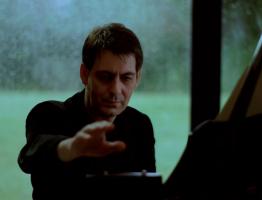
Herman Asselberghs
Two Times 4'33
Doc. expérimental | 35mm | couleur | 11:0 | Belgique | 2008
De Boer a invité le pianiste basé à Bruxelles Jean-Luc Fafchamps à jouer deux fois de suite la composition « 4?33?? » de John Cage devant un auditoire, dans un studio des P.A.R.T.S. (Performing Arts Research and Training Studios) de Bruxelles (Belgique). En une seule prise, la caméra filme l'exécution de cette composition musicale « silencieuse », avec les trois signes de ponctuation indiqués par Cage sur l?unique ligne de la partition à 1'40", 2'23" et 2?30", que Fafchamps, qui demeure le reste du temps toujours calme et absorbé, interprète en touchant un chronomètre. Tournée sur une pellicule 35 millimètres, ce qui assure la netteté des détails visuels, cette première partie est mariée à un son ambiant enregistré de façon synchrone, joué en surround Dolby lorsque l'?uvre est projetée. À la seconde interprétation, qui correspond à la deuxième partie du film, De Boer coupe tous les sons, à part les clics du chronomètre de l?exécution.
Manon de Boer est née en Inde, vit et travaille à Bruxelles (Belgique). Elle réalise des films, des vidéos, des installations, publie et enseigne à KASK. Elle fait partie de la plateforme de production-distribution Auguste Orts. Utilisant la narration personnelle comme une méthode, Manon de Boer explore la relation entre le langage, le temps et les revendications de vérité. Elle explore également la perception du temps par le biais d?un usage conscient du film en tant que médiateur artistique, et par l?analyse de ses effets sur le spectateur. La façon dont elle désincarne l?image, le son et la musique dans ses compositions, modifie subtilement le schéma classique de la perception du film.
Aglaia Konrad
Catalogue : 2015Das Haus | Film expérimental | 16mm | couleur | 21:40 | Autriche | 2014
Aglaia Konrad
Das Haus
Film expérimental | 16mm | couleur | 21:40 | Autriche | 2014
Das Haus deepens the exploration of sculptural architecture that Aglaia Konrad conducted with the series of 16mm films Concrete and Samples. Shot in a house designed by architect Juliaan Lampens in Sint-Martens-Latem (Belgium), the film resumes the artist’s interest on the possibilities of the cinematic medium to generate –rather than capture - an architectural experience. An experience which, in this film, surpasses the visual to mobilize bodily perception and even desire. Konrad’s editing carefully measures the doses of perceptual information it provides to our orientation drive in a process that departs from an initial willingness to orient oneself towards the pleasure of surrendering to disorientation and fragmentation. A disorientation that could be called “perverse” in the sense that Freud bestowed to the word –perverse pleasures are those which linger in the detour; in the resistance to result in a productive goal– insofar as the film replaces the production of a representation of space in favour of perceptive defamiliarization and tactile pleasure. Architecture and film are constantly looking at each other in a piece in which "angle", "transition", "cut", "sequence", "frame", " joint", " fold " and "rhythm" are notions that are spread from one discipline to the other as if the camera and editing would be reading the space as a composition score. There are two architectural comparisons that are often applied to filmmaking: the idea of cinema as a "window" and as “mirror". Das Haus, entangles and complicates those comparisons by treating windows as interfaces that blur the inside and outside and whose transparency acquires materiality, and by using mirrors as devices that disrupt form pushing it to a state of potentiality. In Das Haus the screen is no longer a window but rather a skin: for it is a body interface, a tactile surface and a membrane that is neither safe nor transparent because it reveals its inner cinematic compositional strategies.
Aglaia Konrad is a photography based artist living in Brussels whose work has focused mainly on metropolitan urban space. She has been advising researcher at the Jan Van Eyck Academy in Maastricht and is currently teaching at the Hogeschool Sint-Lukas in Brussels. She had presented her work in solo exhibitions in Siegen, Antwerp, Geneva, Graz, Cologne and New York, among other cities, as well as in international group shows such as Documenta X (1997), Cities on the Move (1998-1999) and Talking Cities (2006). Her work has been documented in several exhibitions catalogues and monographic publications such as 'Elasticity' (2002) and 'Iconocity' (2005). For her book 'Desert Cities' (2008) she received the Infinity award for the best photo book 2009 of the International Center for Photography, New York. The book 'Carrara' (2011) won the Fernand Baudin Prize 2011. Before the trilogy Concrete & Samples (2009-2010) she made the film Sculpture House (2008, 12'05") based on a house built in 1968 around Liège (BE) by Jacques Gillet, Felix Roulin and René Greisch.
Aglaia Konrad
Catalogue : 2017La Scala | Film expérimental | 16mm | couleur | 12:24 | Autriche, Belgique | 2016
Aglaia Konrad
La Scala
Film expérimental | 16mm | couleur | 12:24 | Autriche, Belgique | 2016
The subject of Aglaia Konrad’s 16mm films is modernist architecture but rather than a form of architecture on film, or film on architecture, her films investigate the potential for film to embody the experience of architecture as sculpture. The protagonist here is ‘La Scala’, a villa on Lake Garda, designed by Vittoriano Vigano for André Bloc in 1958. The ‘multiple projection’ (split-screen) of La Scala proposes a multiplicity of perspectives and, more significantly, a succession of combined images.
Aglaia Konrad (1960, Salzburg) criss-crosses urban spaces. Her photographs, films and installations zoom in on exceptional buildings and the transformation of cities. She focuses on the way architecture is visualised and exhibited. Aglaia Konrad lives in Brussels and teaches at LUCA School of Arts. She had presented her work in solo exhibitions in Siegen, Antwerp, Geneva, Graz, Cologne and New York, among other cities, as well as in international group shows such as Documenta X (1997), Cities on the Move (1998-1999) and Talking Cities (2006). Her work has been documented in several exhibitions catalogues and monographic publications such as ‘Elasticity’ (2002) and ‘Iconocity’ (2005). For her book ‘Desert Cities’ (2008) she received the Infinity award for the best photo book 2009 of the International Center for Photography, New York. The book ‘Carrara’ (2011) won the Fernand Baudin Prize 2011. In 2016 she published ‘From A to K’ (Buchhandlung Walther Konig).
Aglaia Konrad
Catalogue : 2019IL CRETTO | Vidéo expérimentale | 16mm | couleur | 11:21 | Autriche, Belgique | 2018
Aglaia Konrad
IL CRETTO
Vidéo expérimentale | 16mm | couleur | 11:21 | Autriche, Belgique | 2018
In 1968, the island of Sicily suffered a huge earthquake that completely devastated several villages, including Gibellina. Il Grande Cretto, the intervention projected by the Italian artist Alberto Burri for the ruins of Gibellina, a small village in the western part of the Island. This intervention - which took over thirty years to complete, after successive interruptions and recommences - is for me the most crystalline and powerful implementation of what may be described, in an apparent paradox, as a contemporary monument. The radical aspect of this place is that the monument coincides with the memory of the event. It is therefore, a performative piece - a living monument. The monument is the place, on a 1:1 scale. Aglaia Konrad’s films are careful and rigorous approximations to certain places or realities. In her films she works with matter (light, sound, memory and perception), on the one hand, and with language (editing, rhythm and repetition) on the other. The 16mm film IL CRETTO (transferred to video), uses of a split-screen (recorded in- camera) and dual projection.
AGLAIA KONRAD Austrian, self-taught as an artist, lives in Brussels and teaches at the LUCA School of Arts. She participated in numerous international exhibitions such as Dokumenta X, 1997 in Kassel; "Cities on the Move" 1998 and 1999 (Bordeaux, New York, London, Helsinki, Wien); Shanghai Biennale 2000, "Gazes of Architecture on the Body", Tokyo Wonder Site and Museum of Contemporary Art, Kumamoto, "In the First Circle", Tapies Foundation Barcelona, EMINENT DOMAINS (proper names), Robert Miller Gallery, New York City; Hollein, MAK Vienna; The Brutalism Appreciation Society, HMKV Dortmund, 2009 a soloshow at the Museum of Contemporary Art in Siegen; Sainsbury Gallery Norwich; Fotohof Salzburg; STUK und Netwerk Aalst; in 2016 M Museum, Leuven. "Aglaia Konrad. From A to K", kam bei Koenig Books heraus. Published books: Elasticity (2002); Iconocity (2005); Desert Cities (2008); Carrara (2011 ); Zweimal Belichtet (2013); Aglaia Konrad: From A to K ; SCHAUBUCH: Skulptur (2017).